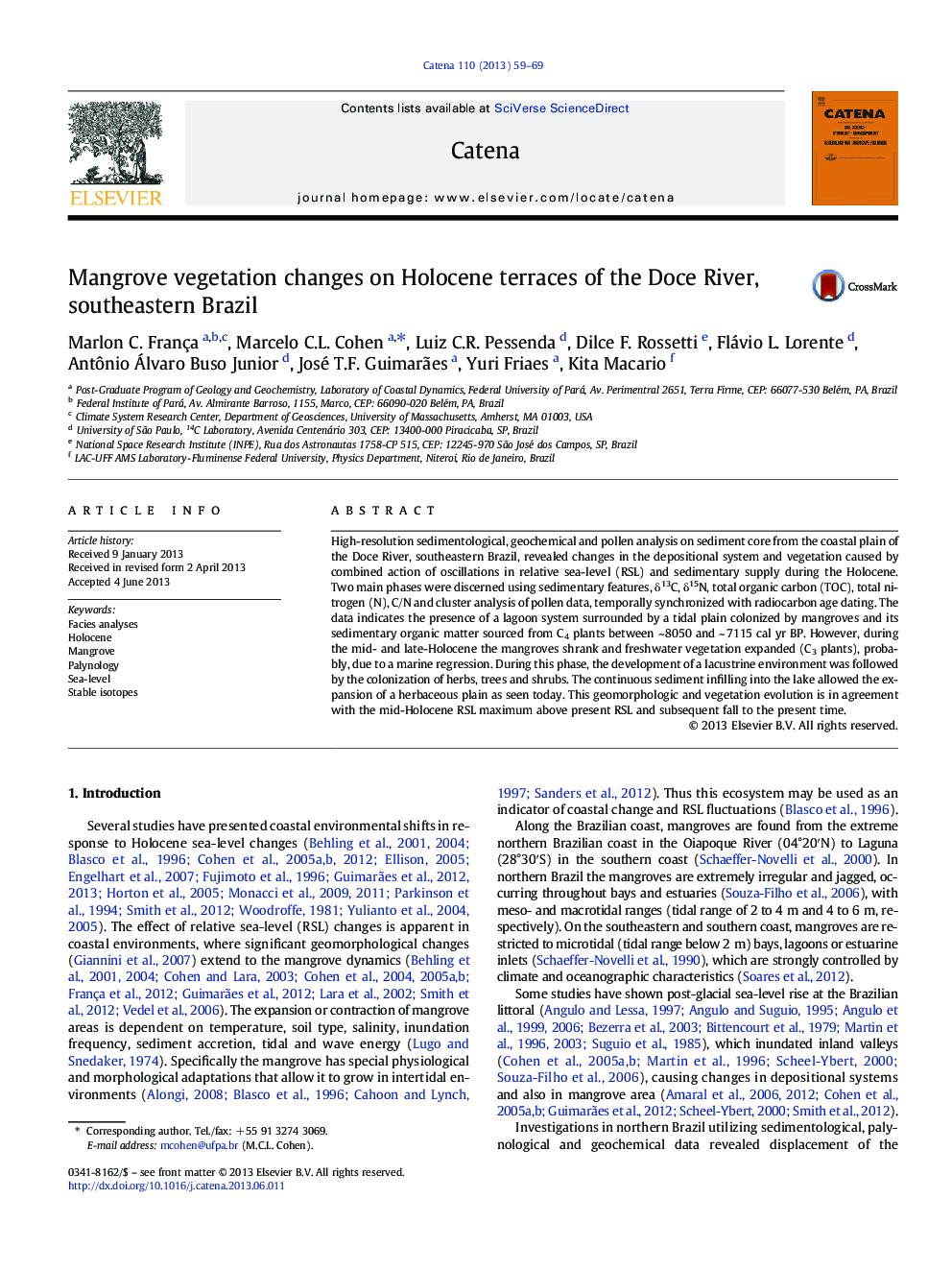| Article ID | Journal | Published Year | Pages | File Type |
|---|---|---|---|---|
| 6408154 | CATENA | 2013 | 11 Pages |
Abstract
High-resolution sedimentological, geochemical and pollen analysis on sediment core from the coastal plain of the Doce River, southeastern Brazil, revealed changes in the depositional system and vegetation caused by combined action of oscillations in relative sea-level (RSL) and sedimentary supply during the Holocene. Two main phases were discerned using sedimentary features, δ13C, δ15N, total organic carbon (TOC), total nitrogen (N), C/N and cluster analysis of pollen data, temporally synchronized with radiocarbon age dating. The data indicates the presence of a lagoon system surrounded by a tidal plain colonized by mangroves and its sedimentary organic matter sourced from C4 plants between ~ 8050 and ~ 7115 cal yr BP. However, during the mid- and late-Holocene the mangroves shrank and freshwater vegetation expanded (C3 plants), probably, due to a marine regression. During this phase, the development of a lacustrine environment was followed by the colonization of herbs, trees and shrubs. The continuous sediment infilling into the lake allowed the expansion of a herbaceous plain as seen today. This geomorphologic and vegetation evolution is in agreement with the mid-Holocene RSL maximum above present RSL and subsequent fall to the present time.
Related Topics
Physical Sciences and Engineering
Earth and Planetary Sciences
Earth-Surface Processes
Authors
Marlon C. França, Marcelo C.L. Cohen, Luiz C.R. Pessenda, Dilce F. Rossetti, Flávio L. Lorente, Antônio Álvaro Buso Junior, José T.F. Guimarães, Yuri Friaes, Kita Macario,
